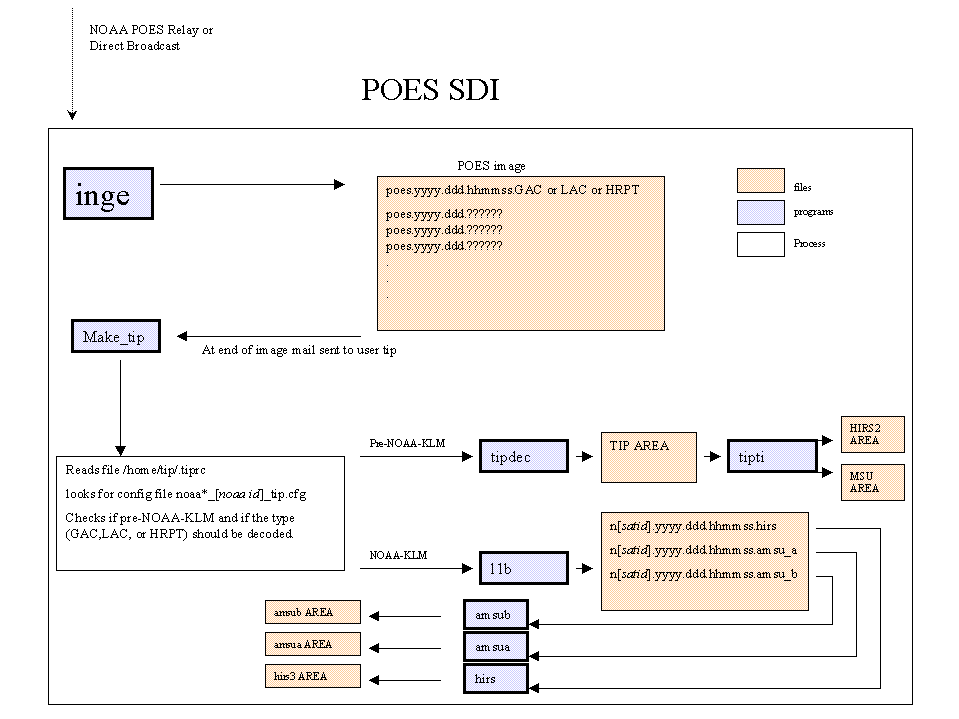SDI Operator's Manual
Revised July 2000
[Search Manual] [Table of Contents] [FAQ] [Go to Previous] [Go to Next]
After an HRPT, GAC, or LAC pass finishes, the POES ingestor sends an e-mail event to all users in the event notifier list file, /data/notify.list. For ingestors that are to decode TOVS data, the user tip should be in/data/notify.list. The user tip is a mail alias that starts a script called /opt/tip/bin/make_tip. This script then reads the appropriate configuration files, and calls other scripts and programs to produce the final TOVS areas. TOVS areas are put into /home/tip. For NOAA-KLM the Level 1b files are put into /data/l1b.
The first thing done by the make_tip script is to read the configuration file /home/tip/.tiprc. This file sets up the environment and other defaults for the script. If the data to be processed is from NOAA-12 or NOAA-14, the make_tip script runs the program /opt/tip/bin/tipdec on the image referred to in the mail event message. This program creates what is called a TIP area. A TIP area is essentially the raw TIP from the signal packaged with a McIDAS area header and navigation. The program /opt/tip/bin/tipti is started upon completion of the TIP area. This program generates calibrated and navigated MSU and HIRS areas from the TIP area and places them in the directory /home/tip.
The first thing done by the make_tip script is to read the configuration file /home/tip/.tiprc. This file sets up the environment and other defaults for the script. If the data to be processed is from NOAA-KLM, the make_tip script reads the appropriate configuration file named noaa<sat#>_<noaaid#>_tip.cfg (e.g., noaa15_7_tip.cfg). This configuration file has information about whether the file is to be decoded or not, and area ranges. The script make_tip then runs the program /opt/tip/bin/l1b on the image referred to in the mail event message. This program creates three Level 1b files: a HIRS/3 file, an AMSU-A file, and an AMSU-B file. If areas are also to be generated, three more programs are run: amsua, amsub, and hirs. These programs create the areas and place them in the directory /home/tip.
The diagram below describes the flow of data to produce decoded TOVS data.

[Search Manual] [Table of Contents] [FAQ] [Go to Previous] [Go to Next]